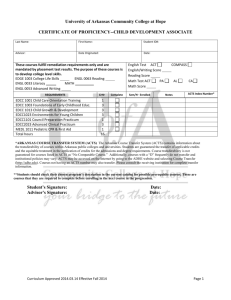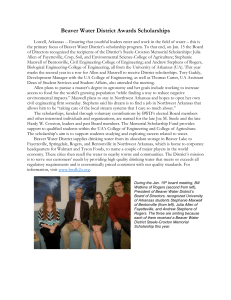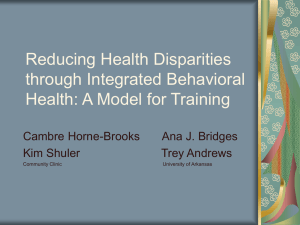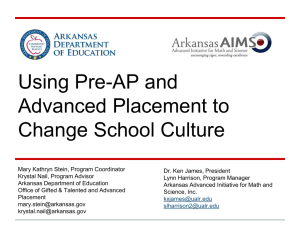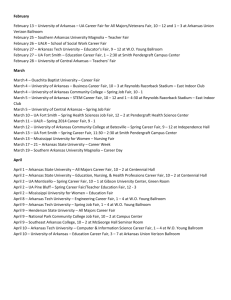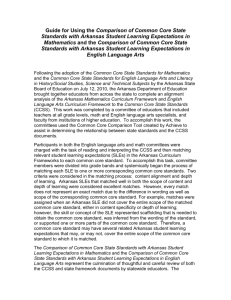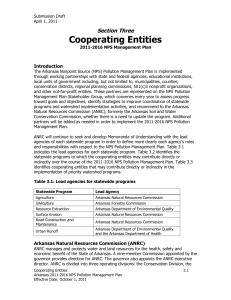Open space Stakeholder Questions - Association for Beaver Lake
advertisement
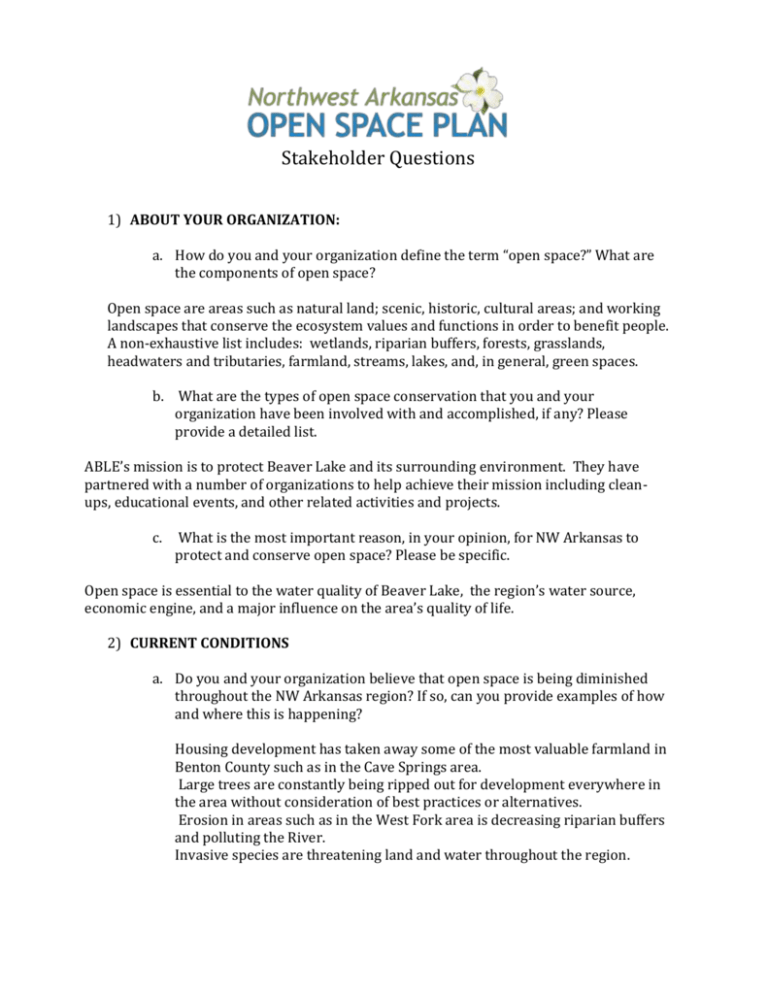
Stakeholder Questions 1) ABOUT YOUR ORGANIZATION: a. How do you and your organization define the term “open space?” What are the components of open space? Open space are areas such as natural land; scenic, historic, cultural areas; and working landscapes that conserve the ecosystem values and functions in order to benefit people. A non-exhaustive list includes: wetlands, riparian buffers, forests, grasslands, headwaters and tributaries, farmland, streams, lakes, and, in general, green spaces. b. What are the types of open space conservation that you and your organization have been involved with and accomplished, if any? Please provide a detailed list. ABLE’s mission is to protect Beaver Lake and its surrounding environment. They have partnered with a number of organizations to help achieve their mission including cleanups, educational events, and other related activities and projects. c. What is the most important reason, in your opinion, for NW Arkansas to protect and conserve open space? Please be specific. Open space is essential to the water quality of Beaver Lake, the region’s water source, economic engine, and a major influence on the area’s quality of life. 2) CURRENT CONDITIONS a. Do you and your organization believe that open space is being diminished throughout the NW Arkansas region? If so, can you provide examples of how and where this is happening? Housing development has taken away some of the most valuable farmland in Benton County such as in the Cave Springs area. Large trees are constantly being ripped out for development everywhere in the area without consideration of best practices or alternatives. Erosion in areas such as in the West Fork area is decreasing riparian buffers and polluting the River. Invasive species are threatening land and water throughout the region. b. Do you know of any specific sites actively in need of protection? All riparian buffers around headwaters and tributaries Beaver Lake 3) OPEN SPACE PROTECTION a. What is the most effective method for protecting and conserving open space? Can you provide an example of where this method has been employed in NW Arkansas? Rather than develop a piecemeal, small scale effort, a more effective, large scale, integrated approach is needed to develop a holistic view of the interconnections of our natural resources. Planning, acquisition, and restoration projects need to be done at this large scale level in order to accelerate protection of air, land, and water quality; build partnerships to foster understanding of how to use and protect the environment, and to provide a public role in planning, implementation, and evaluation of resource programs. This development of a NW Arkansas Open Space Plan has the potential to address open space in such a manner. b. Do you know people or groups with skills in identifying and assessing areas for conservation? The expertise is at the University of Arkansas or other universities where people make their living learning and teaching about this subject. 4) OUTREACH: a. Do you feel that community and business leaders in NW Arkansas understand the importance of and function of open space? If not, what can be done to improve their understanding? Leaders may have a general understanding of the economic and health benefits but have not developed a concerted, comprehensive effort nor developed a prioritized plan of specific goals and strategies to reach those goals. A “road show” needs to be developed to go to each local government legislature and planning board, and to business leaders at Rotary, Chambers of Commerce meetings, etc. that emphasizes the need to complete an NW Arkansas Open Space Plan that will benefit everyone. Since development is accelerating, this needs to be done as soon as possible before it is too late for sensitive areas. b. What specific tools do you feel would work best for reaching out to the public (and for receiving input) in NWA? (for example, news articles, presenting at community meetings, social media, etc.) Whatever studies indicate are the most effective ways. c. Do you have any creative ideas for public outreach on the topic of open space? Since many people have never gone to available open space areas, especially those from urban areas, sponsor “open space” days and even provide bussing to them. 5) IMPLMENTATION a. How can the communities of NW Arkansas best work together to protect the function of open space that you feel is most important? After the “road show” given in 4a, develop a plan to establish and preserve urban parks, greenways, trailways; use Smart growth to redirect economic development into developed areas away from open space, establish watershed and water quality protection, connect farmers’ food and neighborhoods like farmers markets, develop a tree canopy, and establish community gardens. b. What would be the most effective leadership structure for open space conservation and protection in NW Arkansas? Is this something best lead by local government, or by the private sector, or by a combination of both? Northwest Planning is an established entity that already has a relationship with area municipalities. It could be expanded to include the private sector and public to help fund and implement a plan developed for Northwest Arkansas. c. Is there any single organization that you feel is accomplishing exemplary work in open space conservation and protection in NW Arkansas? What makes this organization stand out among other efforts? The Beaver Watershed Alliance, the Illinois River Partnership, and Ozark Water Watch have all secured funds to implement worthy projects in open space conservation and protection. 6) SUMMARY: a. What do you feel that the Open Space Plan for NW Arkansas needs to accomplish most? Please be specific. To protect water quality of surface and underground water supplies to sustain human life and aquatic ecosystems To protect a habitat for diversity of plant and animal species to ensure a healthy, viable, and sustainable ecosystem To maintain critical natural resource-based industries such as farming, forestry, fishing, and tourism To protect wetlands To add a tree canopy especially in urban areas To protect and enhance scenic, historic, and cultural resources considered to be valued parts of a common heritage of our citizens To provide places for education and research relating to ecological, environmental and cultural resources To improve the quality of life To encourage more compact community design patterns To maintain an interconnected network of protected lands and water by connecting open space corridors b. Is there anything that we have not addressed about this subject that you feel is important and should be further discussed? Possible tools to accomplish the plan Funding




